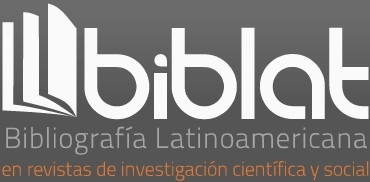Between languages and discourses: “(si), pero no mucho” ([yes], but not so much)
DOI:
https://doi.org/10.35494/topsem.2016.1.35.433Keywords:
modalization, subjectivity, linguistic identity,Abstract
The aim of this paper is to analyze the discursive and semantic
meaning of the expression “(si), pero no mucho” ((yes), but not
so much), which appears spelled in Spanish inside texts written
in Brazilian Portuguese. We organize the description in two
stages: the first describes the argumentative value of this expression,
considering its operation as a counter-argumentative
discourse-marker and the de-realizing effects (attenuation) that
it produces. The second describes the enunciation in Spanish
of this expression, analyzing its operation as an autonymic
modalization of the statement, which produces a reading-back
movement of reinterpretation. We conclude that the expression
“(si), pero no mucho” ((yes), but not so much) concentrates in
its linguistic materiality traces of both an argumentative movement
and a subjective movement. This expression, because of its
Spanish spelling, presents marks of an ironic enunciation, whose
discursive foundation is in the historical determination of the
identification/subjectivation processes of Brazilians speakers,
affected by the ideological effects of the linguistic conflict between
Spanish and Portuguese inside the Mercosur.
Downloads
References
ANSCOMBRE, J-C. & DUCROT, O. (1981). « Interrogation et argumentation ». Langue française. Núm. 52, pp. 5-22.
___________ ([1988] 1994). La argumentación en la lengua. Madrid: Gredos.
AUTHIER-REVUZ, J. (1991). « Hétérogénéités et ruptures ». In Parret, H. Le sens et ses hétérogénéites. París : Éditions DU CNRS, pp. 139-151.
___________ (1998). Palavras incertas. As não-coincidências do dizer. Trad. de E. Orlandi y otros. Campinas : Editora da Unicamp.
___________ (2003). Le fait autonymique: langage, langue, discours. Quelques repères. In Authier-Revuz, J. et al. Parler des mots. Le fait autonymique en discours. París : Presses Sorbone Nouvelle, pp. 67-96.
CELADA, M. T. (2002). O espanhol para o brasileiro. Uma língua singularmente estrangeira. Tesis de doctorado. Campinas, Instituto de Estudos da Linguagem/Unicamp. http://dlm.fflch.usp.br/sites/dlm.fflch.usp.br/files/Tese_MaiteCelada.pdf.
___________ y ZOPPI-FONTANA, M. (2009). “Sujetos desplazados, lenguas en movimiento: identificación y resistencia en procesos de integración regional”. Revista Signo & Seña. Núm. 20, pp. 159-180.
DUCROT, O. ([1984] 1987). O dizer e o dito. Campinas: Pontes.
___________ (1998). “Los modificadores desrealizantes”. Revista Signo & Seña. Núm. 9, pp. 45-74.
GADET, F. y PÊCHEUX, M. ([1981] 1984). La lengua de nunca acabar. Trad. de B. Job. México: FCE.
GARCÍA NEGRONI, M. M. (2000). “Acerca de los fenómenos de relectura y reinterpretación en el discurso”. Revista Iberoamericana Discurso y Sociedad. Vol. 2. Núm. 4, pp. 89-108.
GUESPIN, L. (1976). « Introduction : types de discours ou fonctionnements discursifs ? ». Langages. Núm. 41, pp. 3-12: http://www.persee.fr/web/revues/home/prescript/article/lgge_0458726X_1976_num_10_41_2301
GUIMARÃES, E. (2002). Semântica do Acontecimento. Campinas: Pontes.
___________ (2005). Multilinguismo, divisões da língua e ensino no Brasil. Campinas, Cefiel/IEL/Unicamp: http://www.iel.unicamp.br/cefiel/imagens/cursos/11.pdf.
___________ (2009). “A enumeração. Funcionamento enunciativo e sentido”. Cadernos de Estudos Lingüísticos. Vol. 51.1. Campinas: Instituto de Estudos da Linguagem, pp. 49-58: http://revistas.iel.unicamp.br/index.php/cel/issue/view/37/showToc
___________ (2011). Análise de texto. Procedimentos, análises, ensino. Campinas: RG Editora.
FANJUL, A. (2002). Português-Espanhol, línguas próximas sob o olhar discursivo. São Carlos: Claraluz.
FERNANDES, I. C. S. (2007). Análise dos marcadores discursivos e das tendências enunciativas: contribuiçoes para o ensino de línguas. In Anais do V senale: Seminário Nacional sobre Linguagem e Ensino. Pelotas: Universidade Católica de Pelotas/UcPel.
MARTÍN ZORRAQUINO, M. A. y PORTOLÉS LÁZARO, J. (1999). “Los marcadores discursivos”. En bosque, I. y demonte, V. (dirs.): Gramática descriptiva del español. Madrid: Espasa. Vol. 3, pp. 4051-4213.
ORLANDI, E. (1984). “Segmentar ou recortar?”. Série Estudos. V. 10. Linguística, questões e controvérsias. Uberaba: Faculdades Integradas de Uberaba, pp. 9-26.
___________ (2007). Política linguística no Brasil. Campinas: Pontes.
___________ (2009). Língua brasileira. Campinas: RG Editora.
PÊCHEUX, M. ([1969] 1978). Análisis automático del discurso. Madrid: Gredos.
___________ ([1975] 1988). Semântica e discurso. Uma Crítica à Afirmação do Óbvio. Trad. de Eni P. Orlandi, Lourenço Ch. Jurado Filho, Manoel L. Gonçalves Corrêa e Silvana Serrani]. Campinas: Editora da Unicamp.
RAE-Asociación de Academias de la Lengua Española (2010). Manual de la nueva gramática de la lengua española. Madrid: Espasa.
SERRANI-INFANTE, S. (2001). Resonancias discursivas y cortesía en prácticas de lecto-escritura. Revista Delta. Vol. 17. Núm. 1, pp. 31-58: http://www.scielo.br/pdf/delta/v17n1/a02v17n1.pdf
ZOPPI FONTANA, M. (1996). “O espanhol no espelho”. Educación para la Integracion/augm. Vol. 1, pp. 37–40.
___________ (2009). “O português do Brasil como língua transnacional”. En ZOPPI-FONTANA, M. (org.). O português do Brasil como Língua Transnacional. Campinas: RG/Capes, pp. 13-42.
Downloads
Published
How to Cite
Issue
Section
License

Tópicos del Seminario is licensed under a Creative Commons Reconocimiento-NoComercial-CompartirIgual 4.0 Internacional License.














